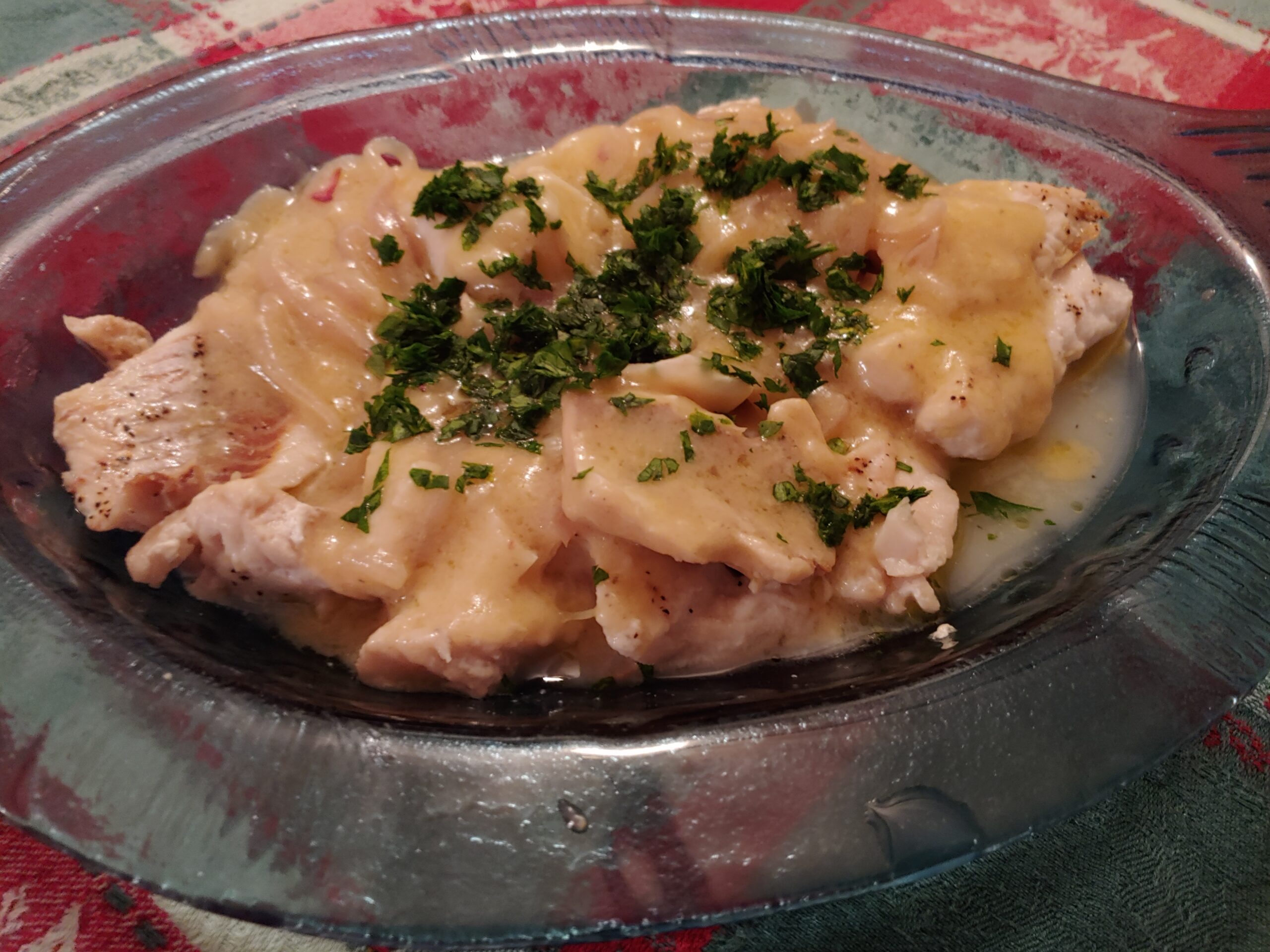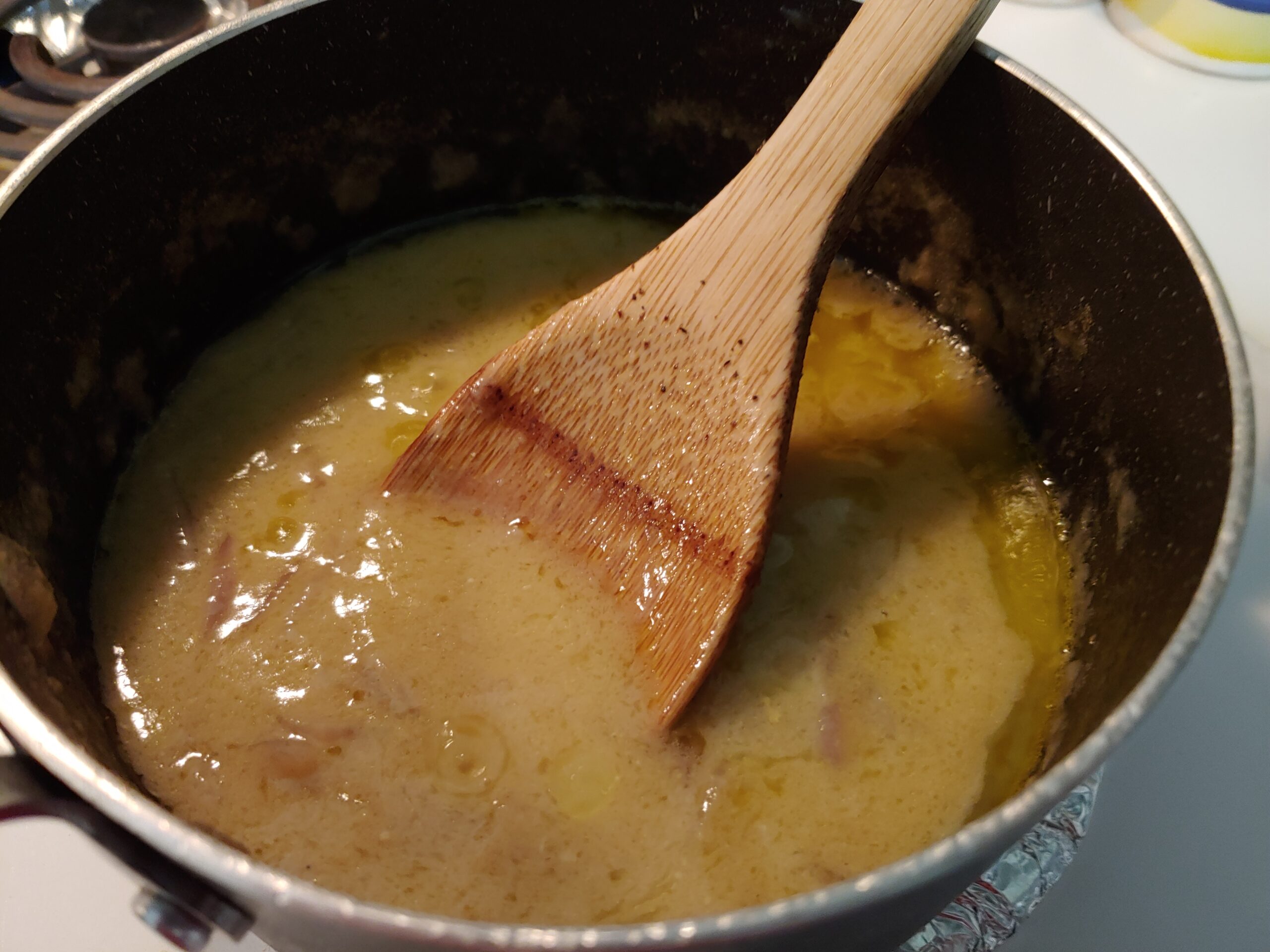Salted cod or bacaloa, is a popular dish in Nuyorican cooking, even to this day, at least in my family. We still eat it frequently with rice. It all goes back to life on the island of Puerto Rico. Salt cod, at the time, was an inexpensive item, easy to find. It was cod packed in salt as a preservative. So, it didn’t’ need refrigeration. Thus, in bygone days, it was available everywhere, not only in the Caribbean but throughout the Mediterranean basin. And, to this day, it’s popular in Spanish, Portuguese, Greek and French cuisine; and prevalent in such far flung places as India and Canada.
As noted, salt cod is high in sodium content. That means it has to be prepared before cooking. This is simple enough: soak the cod overnight in cool water. Drain, then place the cod in a pot or pan of boiling water to cover and simmer gently for 15 minutes. This removes all traces of excess salt. Finally, drain the cod and, when cool, peel any skin and bones. Then flake so that it is ready to cook. Let me state that most salt cod today is packaged already peeled and boned so, at least, that part of the procedure is taken care of.
Thankfully, the Rivera family has perfected an easier method to desalt cod. In this case, you place the cod in a pot or saucepan with water to cover and let it stand 20 minutes. Then drain the cod, remove the skin and bones (if not already done), place fish in a skillet and cook over low heat for 5 minutes. This method is quicker than the overnight soaking bit. But, we’re not done yet. The recipe given also calls for achiote, which is simply cooking 1 tablespoon annatto seeds (found in most supermarkets in 8-oz. jars), in ½ cup olive oil, stirring frequently for 5 minutes. Lastly, straining the oil into a glass jar or container. The achiote gives the recipe a lovely bright orange-red color and distinctive flavor. If you pressed for time, you can substitute a packet of Goya Sasón or Sa-són Accent mixed in with a tablespoon of olive oil.
Yeah, I know you’re thinking, preparing this dish calls for a lot in terms of time and patience. But, my friends, believe me, it’s well worth it. Once you add the eggs to the codfish, you have a dish suitable for breakfast, lunch or dinner—and one you will go back too time and again.
BACALOA CON HUEVOS
(Codfish with Eggs)
Ingredients::
3 tablespoons olive oil
1 medium onion, peeled and finely chopped
1 clove garlic, peeled and crushed
1 pound salt cod, prepared for cooking (see above)
3 tablespoons achiote (see above)
6 eggs, lightly beaten
Instructions:
- Heat oil in a large frying pan or skillet. Sauté onion and garlic until onion is tender and slightly brown.
- Add flaked codfish and achiote coloring. Cook for about 3 minutes.
- Add beaten eggs. Sauté over low heat until eggs are scrambled.
Yield: 4 servings.
















